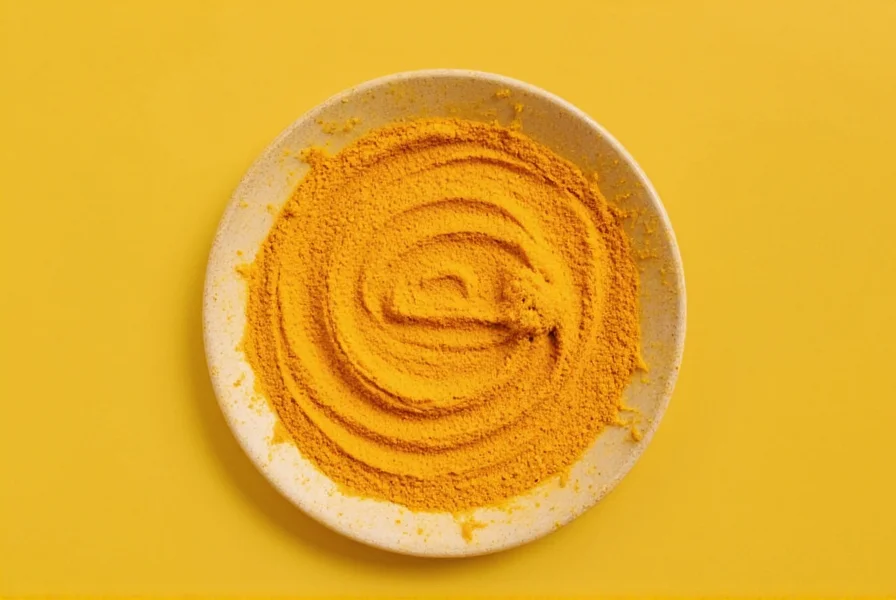Curcumin, the active compound in turmeric, has demonstrated significant anti-inflammatory effects in laboratory studies that could translate to skincare benefits when properly formulated. When incorporated into facial cleansers, turmeric may help address common skin concerns through multiple mechanisms of action. The compound's ability to inhibit inflammatory pathways suggests potential for reducing redness associated with acne and rosacea, while its antioxidant properties may combat free radical damage that contributes to premature aging.
Research published in Phytotherapy Research indicates that topical curcumin applications show promise for inflammatory skin conditions, though most studies remain in vitro or animal models. Human clinical trials specific to turmeric face wash formulations are limited, making it essential to approach marketing claims with reasonable expectations. The compound's poor bioavailability presents formulation challenges—effective products often include absorption enhancers like black pepper extract (piperine) to improve skin penetration.
Scientific Basis of Turmeric for Skincare
Turmeric (Curcuma longa) contains curcuminoids, with curcumin comprising about 2-8% of the rhizome's composition. This polyphenol interacts with multiple molecular targets involved in skin health:
- Anti-inflammatory action: Inhibits NF-kB pathway and reduces pro-inflammatory cytokines
- Antioxidant capacity: Neutralizes free radicals and boosts endogenous antioxidant enzymes
- Antimicrobial properties: Shows activity against Propionibacterium acnes, the bacteria implicated in acne
- Tyrosinase inhibition: May help reduce hyperpigmentation by interfering with melanin production
These mechanisms suggest turmeric face wash could benefit those with inflammatory skin conditions, though individual results vary significantly based on skin type, product formulation, and consistent usage.
| Skin Concern | Potential Benefit | Scientific Support Level |
|---|---|---|
| Acne | Reduces inflammation and bacterial growth | Moderate (lab studies) |
| Hyperpigmentation | Inhibits melanin production pathways | Preliminary (in vitro) |
| Redness/Rosacea | Calms inflammatory responses | Limited human studies |
| Dull Skin | Antioxidant protection against environmental damage | Theoretical basis |
Choosing an Effective Turmeric Face Wash
Not all turmeric face wash products deliver equivalent results. Consider these factors when selecting or formulating a turmeric cleanser:
Curcumin concentration: Effective formulations typically contain 0.5-2% curcumin extract. Pure turmeric powder alone provides minimal benefit due to poor solubility and skin absorption.
Bioavailability enhancers: Look for products containing piperine (from black pepper), phospholipids, or nano-encapsulation technology that improve curcumin's skin penetration. Products without these may offer limited benefits despite containing turmeric.
pH balance: An ideal facial cleanser maintains skin's natural pH between 4.5-5.5. Turmeric face wash products that disrupt this barrier can cause irritation despite containing beneficial ingredients.
Complementary ingredients: Turmeric works synergistically with certain ingredients:
- Honey: Provides antimicrobial properties and humectant effects
- Green tea extract: Enhances antioxidant protection
- Niacinamide: Complements turmeric's brightening effects
- Aloe vera: Soothes potential irritation from turmeric

Proper Usage Guidelines
To maximize benefits while minimizing potential side effects when using turmeric face wash:
- Frequency: Start with 2-3 times weekly, gradually increasing to daily use if well-tolerated
- Application: Massage gently onto damp skin for 30-60 seconds before rinsing thoroughly
- Rinsing: Ensure complete removal to prevent temporary yellow staining
- Follow-up: Apply moisturizer immediately after cleansing to maintain skin barrier
- Consistency: Allow 4-8 weeks of regular use to assess visible results
For those creating natural turmeric face wash at home, combine 1 teaspoon turmeric powder with 2 tablespoons honey and 1 teaspoon milk or yogurt. Use immediately and store any leftovers in the refrigerator for no more than 3 days. Always perform a patch test before full facial application.
Safety Considerations and Potential Side Effects
While generally safe for most skin types, turmeric face wash requires certain precautions:
Staining: Turmeric can temporarily stain light-colored skin and fabrics yellow. Using lower concentrations and thorough rinsing minimizes this risk. The staining typically fades within hours.
Sensitivity: Some individuals may experience contact dermatitis. Discontinue use if redness, itching, or burning occurs. Those with known sensitivity to ginger or other Zingiberaceae family plants should exercise caution.
Photosensitivity: Curcumin may increase sun sensitivity in some individuals. Always follow turmeric face wash usage with broad-spectrum SPF 30+ during daytime.
Medication interactions: While topical application presents minimal systemic absorption, those using prescription acne medications should consult a dermatologist before incorporating turmeric products.
Realistic Expectations vs. Marketing Hype
The skincare industry often overstates turmeric's benefits. Understanding what turmeric face wash really works for requires distinguishing evidence from hype:
- Supported benefits: Mild anti-inflammatory effects, potential reduction in acne-related redness, antioxidant protection
- Limited evidence: Significant wrinkle reduction, dramatic skin lightening, complete acne elimination
- Unsupported claims: Replacing medical acne treatments, reversing deep scarring, providing instant results
For turmeric face wash for sensitive skin, choose formulations with lower curcumin concentrations (0.5-1%) and soothing ingredients like aloe or colloidal oatmeal. Avoid products containing alcohol, synthetic fragrances, or harsh surfactants that could compromise the skin barrier.
When to Consult a Dermatologist
While turmeric face wash may complement skincare routines, consult a dermatologist if you experience:
- Persistent irritation or allergic reactions
- Moderate to severe acne requiring prescription treatment
- Suspected skin infections
- No improvement after 8-12 weeks of consistent use
Professional guidance ensures you're addressing underlying skin conditions appropriately rather than relying solely on natural remedies that may not provide sufficient treatment.
Conclusion
Turmeric face wash represents a promising natural skincare option with scientific rationale supporting its anti-inflammatory and antioxidant benefits. While not a miracle solution, properly formulated products used consistently can complement comprehensive skincare routines for various skin concerns. The key lies in managing expectations, selecting quality formulations, and understanding that individual results will vary based on skin type, product quality, and consistent usage. As research continues to evolve, turmeric's role in evidence-based skincare may become more clearly defined, but for now, it serves as a valuable complementary option within a broader skincare strategy.










 浙公网安备
33010002000092号
浙公网安备
33010002000092号 浙B2-20120091-4
浙B2-20120091-4